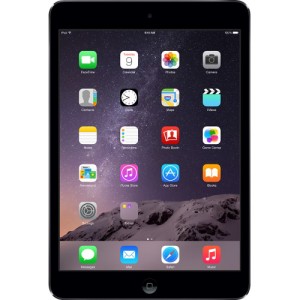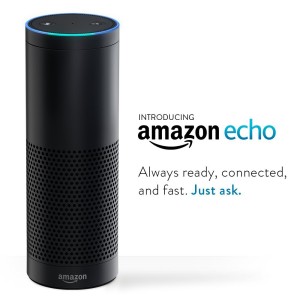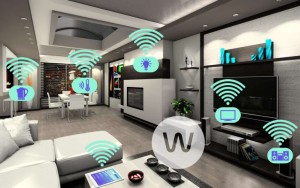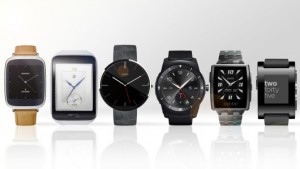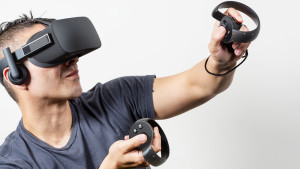Recently, I was contacted and asked what technology will look like in the future in education, business, and in the world. I had to chuckle when I was asked this question because I think my reputation (sometimes in-famous reputation with some of my less techie staff ) as a techie leader makes people perceive I have insider information about what Apple, Google, or Microsoft might be hiding somewhere deep in their headquarters research vault. I don’t! But it’s fun to think I do!
Here are some of my thoughts! Love to hear your feedback! I will keep updating this blog entry with more information as I learn and receive feedback!
2015 -Now
Home: 78.5% of households have a desktop computer, 58% have a smartphone, and 34+% of Americans have a tablet.
- Robots/ Digital Assistants like Amazon Echo, Siri, Cortanta, Jibo begin wave of robot/digital assistant revolution.
- Automation: NEST, Roku, Apple tv, Microsoft Xbox, etc. begin getting traction in home entertainment & automation.
- Wearable technology begins getting traction thanks to the Pebble, iwatch, and moto 360.
Education/Business: 1:1 and 1+1 initiatives taking hold in districts around the world. Tablet based use in business is gaining traction. 13.4 million work from home. 32% of students taking at least one online class.
- Integration of technology to enhance instruction and target skills deficits taking hold in pockets. Teachers/Schools begin intentionally using apps that target standards and student skill deficits.
- Collaboration based technology: Google Classroom, Office 365, Google Docs, Evernote, Update Zen, Edmondo, ebackpack, etc. are taking leaders, staff and students higher levels.
- Social media use in communication with parents, community, and regions taking root. Digital printers, robotics, STEAM (Sciency, Technology, Engineering, Arts, and Math) are taking off!
- DATA & Instruction: Use of data dashboards like homeroom and dibels, etc. are impacting instruction. Research around the brain and what research-based strategies are most effective in learning are in use.
2020
* All percentages are guesstimates only.
Home: less than 50% have a traditional desktop computer. 90+% have a smart phone, 90%+ have tablet, 50+% have wearable technology…e.g. watch, glasses,
- (Implant) Revolution: Implanted technology begins.
- Driverless cars: They are common among the wealthy.
- Robots/ Digital Assistants, like Jibo, and Amazon Echo cloud based assistants are in wide-spread use. Samsung, Siri, Cortona, Apple all have their own product line.
- Wearable technology is mainstream, google glasses are back but much improved because they are now in contacts, ear rings, you name it..it probably is connected!
Education/Business: Schools who do NOT have 1:1 are very few in number…guesstimate 5% or less. 70+% taking at least one online class, 30 million + work from home.
- Paperless environments are standard, including digital curriculums and teaching materials are in wide-spread use.
- Niche market of anti-tech schools begins forming??
- Collaboration technology is widespread and in use throughout the education and business.
- DATA & Instruction: Diagnosing, treating and tracking student learning takes huge leaps forward as a result of adaptive technology and diagnostic assessments.
- On-line student gaming leagues: Begin challenging traditional sports.
2025
Home: 2% have a traditional desktop computer. 90+% have a smart-phone, 90%+ have a tablet, 70% have computer automated home.
- Robots/Digital Assistants: They are everywhere and look human!
- Wearable technology: Widespread use. e.g. digital toothbrushes that collect information on how well your brushing, ear-rings that vibrate to calm you when your under stress…you name it they’ll have it!
- Implanted Technology: Borg Revolution is underway.
- Virtual Reality: Coming home and putting your Oculus or Microsoft Hololens on is what people do!
Education/Business: 99% of schools are 1:1, students are coming with technology based implants, 90+% taking at least one online class, 50+ million work from home.
- Paperless/digital environments are standard, including digital curriculums and teaching materials are in wide-spread use.
- Niche market of anti-technology schools begins forming in remote locations?
- Collaboration technology is widespread and in use throughout the education and business.
- DATA & Instruction: Diagnosing, treating and tracking student learning takes huge leaps forward as a result of adaptive assessments and advanced DNA testing.
- On-line gaming leagues: They are as common as traditional sports.
That’s all I have guys! Love to hear your feedback and ideas and thoughts on this topic! white


